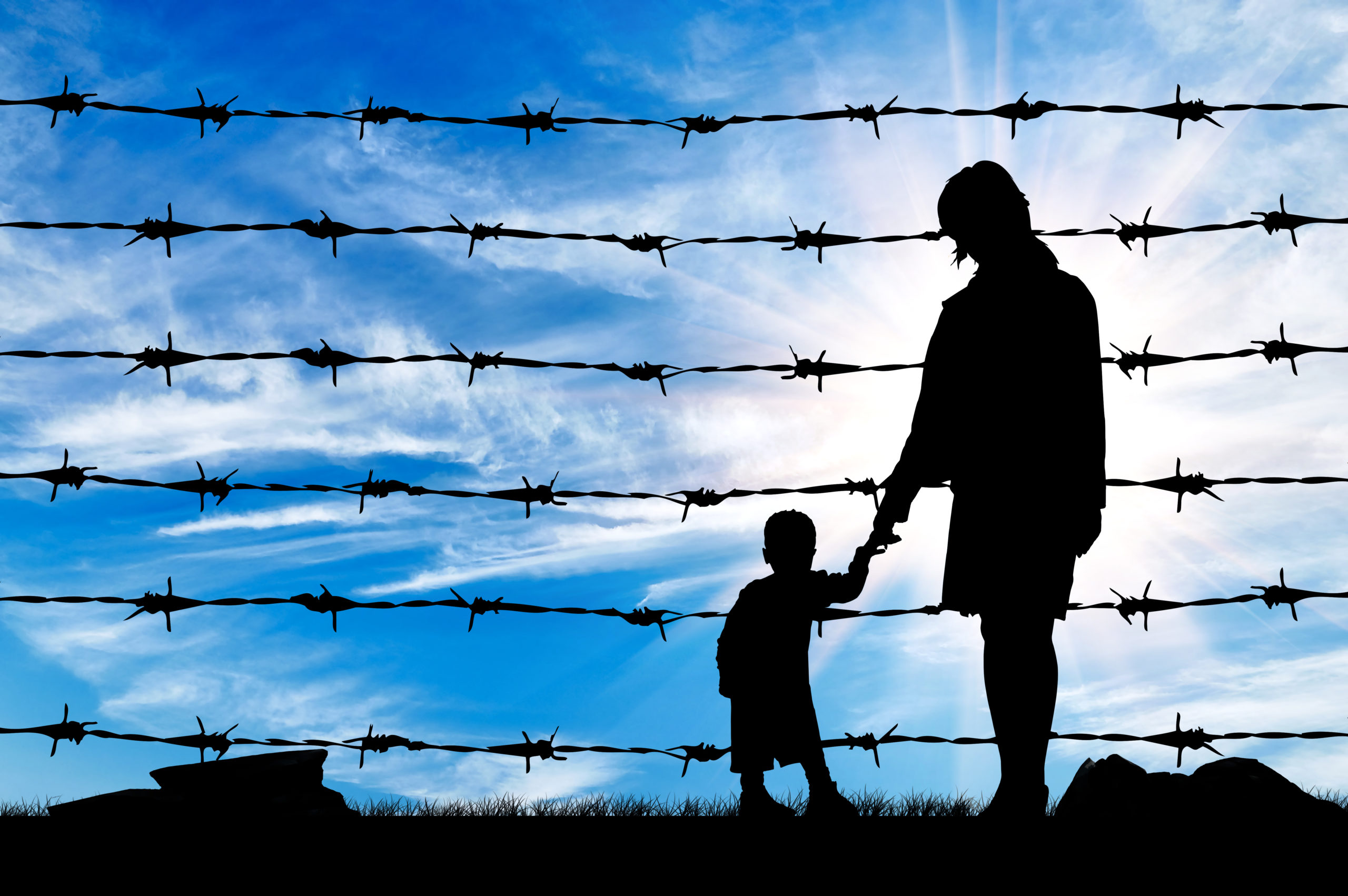Combatting the AAPI Perpetual Foreigner Stereotype
Date: May 20, 2021

As we continue to celebrate Asian American and Pacific Islander Heritage Month, this week we have partnered with The Leaders Forum, which provides leading analysis of Asian American demographics and related public policy issues, to examine educational, workforce, and earning divides in the AAPI community.

The rise in anti-Asian bias attacks and rhetoric have brought new attention to numerous stereotypes that have long plagued Asian American and Pacific Islanders in the United States. While last week’s post focused on the model minority myth, unpacking how the high achievement metrics of AAPIs in general masks the needs and realities of more vulnerable AAPI communities, this week we focus on another stereotype, that of Asian Americans and Pacific Islanders as perpetual foreigners. The perpetual foreign stereotype depicts Asian American and Pacific Islanders as outsiders and aliens regardless of where they were born or how long they have lived in the United States.
This all, of course, runs counter to the reality and the data. Asian American and Pacific Islanders have a long history in what is now the United States, dating back to the 18th century. Moreover, after decades of significant immigration from Asia following the 1965 removal of discriminatory country quotas, the AAPI community is increasingly U.S.-born, with the U.S.-born AAPI population now growing faster than the AAPI immigrant population. On top of this, immigrant Asian American and Pacific Islanders now have higher than average rates of naturalization and 2020 saw the highest voter participation rates for AAPI voters in history. But, despite these positive developments, issues that affect some segments of the AAPI community still merit attention, including undocumented immigrants and certain immigrant groups with limited English language proficiency.
Key Findings
- Today, 1 in 3 Asian American and Pacific Islanders were born in the United States, even though immigration from Asia remains significant. In fact, the U.S.-born AAPI population is now growing faster than the AAPI immigrant population.
- Nearly half, or 45 percent, of all foreign-born Asian American and Pacific Islanders have lived in the United States for more than 20 years, a remarkable statistic given that before the Immigration and Naturalization Act of 1965, immigration from Asia was highly restricted due to racially discriminatory country quotas.
- While the naturalization rate for immigrants overall stands at just over 50 percent, it is substantially higher for AAPI immigrants at 59.1 percent. For many AAPI immigrant groups the naturalization rate is even higher. More than 3 out of 4 Vietnamese and Taiwanese immigrants hold U.S. citizenship, as do 71.3 percent of Filipino immigrants.
- There are more than 10.7 million Asian American and Pacific Islander eligible voters in the United States. Together, they make up 4.7 percent of all eligible voters in the country. Texas, home to an increasingly prominent AAPI population, now has the third largest AAPI electorate in the country, with more than 736,000 eligible AAPI voters.
- In 2019, there were an estimated 1.8 million undocumented AAPI immigrants, making up almost 17.6 percent of all undocumented immigrants in the United States. Despite the challenges they face, AAPI undocumented immigrants continue to contribute to the U.S. economy every year, including $49.3 billion in earnings, more than $7.2 billion paid in taxes, and more than $42.0 billion held in spending power.
- While overall, more than 4 in 5 AAPI immigrants can speak English well or better, almost 5 percent, or 550,000 AAPI immigrants do not speak any English at all.
Despite the persistent trope that Asian American and Pacific Islanders are all immigrants, an increasing share of them are U.S.-born. Today, 1 in 3 Asian American and Pacific Islanders was born in the United States, even though immigration from Asia remains significant. In fact, U.S.-born AAPI population is now growing faster than the AAPI immigrant population.
More importantly, the perpetual foreign myth glazes over centuries of Asian American and Pacific Islander history in the United States from the first Chinese and Filipino immigrants to North America and Hawaii in the 18th century. Some AAPI groups that have seen less immigration now have mostly U.S.-born populations. For example, nearly 6 out of 10 Japanese Americans were born in the United States. The same goes for almost 2 out 3 Hmong Americans. Pacific Islanders are also overwhelmingly U.S.-born as Native Hawaiians make up the about one-third of the total Pacific Islander population.
Share of Population U.S- and Foreign-Born, by AAPI Group
| AAPI Group | Share, U.S.-Born | Share, Foreign-Born | Total Population |
|---|---|---|---|
| Chinese | 31.1% | 68.9% | 4,242,886 |
| Indian | 28.9% | 71.1% | 4,216,058 |
| Filipino | 36.0% | 64.0% | 2,979,372 |
| Vietnamese | 33.0% | 67.0% | 1,864,373 |
| Korean | 30.9% | 69.1% | 1,468,330 |
| Japanese | 58.8% | 41.2% | 743,274 |
| Pakistani | 35.2% | 64.8% | 504,394 |
| Hmong | 64.5% | 35.5% | 306,010 |
| Cambodian | 43.7% | 56.3% | 257,266 |
| Thai | 24.7% | 75.3% | 221,123 |
| Bangladeshi | 27.7% | 72.3% | 195,081 |
| Taiwanese | 32.8% | 67.2% | 194,520 |
| Nepalese | 18.6% | 81.4% | 189,324 |
| Laotian | 44.6% | 55.4% | 187,054 |
| Pacific Islanders | 73.2% | 26.8% | 592,172 |
| ALL AAPI | 35.3% | 64.7% | 19,099,336 |
Nearly half, or 45 percent, of all foreign-born Asian American and Pacific Islanders have lived in the United States for more than 20 years, a remarkable statistic given that before the Immigration and Naturalization Act of 1965, immigration from Asia was highly restricted due to discriminatory country quotas. The share of foreign-born residents who have lived in the United States for more than 20 years is even higher for certain AAPI groups. For example, the majority of foreign-born Vietnamese, Taiwanese, Filipino, and Korean Americans all arrived in the United States two decades ago.
Many of these long-resident foreign-born AAPI populations came as refugees to the United States. In fact, at least 1.2 million resettled refugees in the United States came from Asia or the Pacific. These AAPI refugees include people who escaped the Vietnam War and its related conflicts, others from ongoing ethnic strife in the Himalayas and South Asia.
Today, AAPI refugees form an important part of local economies, especially in the Midwest and the West Coast, where many were resettled. In 2019 alone, AAPI refugee households earned more than $51.3 billion, paid almost $14.2 billion in federal income, state, and local taxes, and almost $37.2 billion in spending power. Many of AAPI refugees have set up their own businesses and have some of the highest rates of entrepreneurship in the county.
Economic Contributions of AAPI Refugees
| Household Income | $51.3 Billion |
| Federal Income Taxes Paid | $9.4 Billion |
| State and Local Taxes Paid | $4.7 Billion |
| Spending Power | $37.2 Billion |
Refugees also have some of the highest rates of naturalization among foreign-born people in the United States, a reflection of their commitment to seeing America as their new home. More than 84 percent of resettled refugees were naturalized citizens.
Becoming American Citizens
In general, many AAPI immigrants, like AAPI refugees, have taken the steps to become American citizens once they become eligible to naturalize. In fact, while the national naturalization rate for immigrants stands at just over 50 percent, it is substantially higher for AAPI immigrants at 59.1 percent.
For many AAPI immigrant groups the naturalization rate is even higher. More than 3 out of 4 Vietnamese and Taiwanese immigrants hold U.S. citizenship, as do 71.3 percent of Filipino immigrants. The naturalization rates for Korean (65.2 percent), Pakistani (66.7 percent), Bangladeshi (63.2 percent), and Thai (62.7 percent) immigrants is also above the AAPI average.
AAPI Voters
As we have seen in the most recent elections in 2020, Asian American and Pacific Islanders, especially those that are eligible to vote, are increasingly finding their voice. There are more than 10.7 million Asian American and Pacific Islander eligible voters in the United States. Together, they make up 4.7 percent of all eligible voters in the country. Overall, AAPI voters are also growing in number rapidly, second only to Hispanic American voters in terms of growth rate since 2010. Between 2010 and 2019, the number of AAPI eligible voters increased by 37.7 percent, from more than 7.8 million to more than 10.7 million. Among them, the number of AAPI immigrant voters increased by 34.2 percent, from almost 5.3 million to almost 7.1 million between 2010 and 2019.
Currently the AAPI electorate is still majority foreign-born. However, given current trends, as more U.S.-born Asian American and Pacific Islanders age into voter eligibility, the make-up of the AAPI electorate will also slowly become more U.S.-born. Between 2010 and 2019, the number of eligible U.S.-born AAPI voters increased by more than 45.0 percent, from 2.5 million to almost 3.7 million in 2019.
While voter participation rates among Asian Americans has lagged historically behind other groups, the 2020 election saw some of the highest voting rates ever. While AAPI voters are as diverse as the overall AAPI population, the 2020 election already showed how critical races can turn on how much Asian American and Pacific Islanders come out to vote. For example, in Georgia, the dramatic increase in AAPI voters in 2020 in the Atlanta metro area was large enough to sway the outcome of some of the most competitive electoral contests in the country.
In some other states, Asian American and Pacific Islanders make up even larger shares of the electorate. Texas, home to an increasingly prominent AAPI population, now has the third largest AAPI electorate in the country, with more than 736,000 eligible AAPI voters. Together AAPI eligible voters make up 4.0% of the electorate and are disproportionately concentrated in all-important swing suburban areas in the state’s largest metro areas.
Vulnerable Communities
Like other undocumented immigrants, AAPI undocumented immigrants are some of the most vulnerable segments of the population. This is especially true during the Covid-19 pandemic when undocumented immigrants were largely left out of any pandemic assistance from the federal government.
While discussions about undocumented immigration tend to focus on Latin American immigration, immigrants from Asia make up the second largest group of undocumented immigrants in the United States. In 2019, there were an estimated 1.8 million undocumented AAPI immigrants, making up almost 17.6 percent of all undocumented immigrants in the United States.
Despite these challenges, AAPI undocumented immigrants continue to contribute to the U.S. economy. This includes nearly $49.3 billion in annual income, more than $7.2 billion in taxes, and more than $42.0 billion in spending power.
Economic Contributions of AAPI Undocumented Immigrants
| Household Income | $49.3 Billion |
| Federal Income Taxes Paid | $4.9 Billion |
| State and Local Taxes Paid | $2.3 Billion |
| Spending Power | $42.0 Billion |
Meanwhile for immigrants with limited English language proficiency, access to financial aid and other assistance may have been hard to access due to language barriers even if they were eligible to receive aid. Issues around language access and access to information and services is one that predates the Covid-19 crisis has also been exacerbated by it.
English Language Proficiency
While overall, more than 4 in 5 AAPI immigrants can speak English well or better, almost 5 percent, or 550,000 AAPI immigrants do not speak any English at all.
English Language Proficiency Among AAPI Immigrant Groups by Ancestry Group
| Ancestry Group | Speaks No English | Speaks English Less than Well | Speaks English Better than Well or Fluently |
|---|---|---|---|
| Chinese | 9.3% | 20.2% | 70.4% |
| Taiwanese | 2.4% | 10.4% | 87.2% |
| Japanese | 2.0% | 14.8% | 83.2% |
| Filipino | 0.5% | 5.6% | 93.8% |
| Indian | 1.8% | 5.4% | 92.8% |
| Korean | 3.1% | 19.5% | 77.5% |
| Vietnamese | 7.5% | 28.5% | 64.0% |
| Nepalese | 6.2% | 16.7% | 77.1% |
| Cambodian | 5.0% | 22.6% | 72.4% |
| Hmong | 8.7% | 19.9% | 71.5% |
| Laotian | 3.1% | 28.5% | 68.4% |
| Thai | 3.1% | 15.2% | 81.7% |
| Bangladeshi | 6.3% | 17.8% | 75.9% |
| Pakistani | 2.3% | 8.8% | 88.8% |
| Pacific Islanders | 1.3% | 12.3% | 87.7% |
| ALL AAPI | 4.5% | 14.3% | 81.2% |
Furthermore, the share of limited English proficiency is higher for several AAPI immigrant groups, including Hmong, Chinese, and Cambodian immigrants. In these immigrant groups, almost 3 out of 10 report not speaking English well or at all.
This tells us that while many AAPI immigrants, especially those who came through high-skill immigration channels, have high rates of educational attainment and English language proficiency, there are also a significant number of AAPI immigrants who are often relegated to finding work in less English-language dependent fields that are often manual or physical in nature. This may include many foreign-born AAPI who are undocumented or who came as refugees, with little exposure to English language instruction before their arrival.
This is contrasted with other immigrant groups, especially those from countries where the educational system is geared towards English language instruction such as India, the Philippines, and Pakistan. Immigrants from these countries tend to have especially high rates of English language proficiency. For example, nearly all, or 94 percent of Filipino immigrants speak English well or better and less than 1 percent report having no English language skills at all.
This post is part of our 2021 Asian American and Pacific Islander Heritage Month series. See the links below for the other posts in this series:






